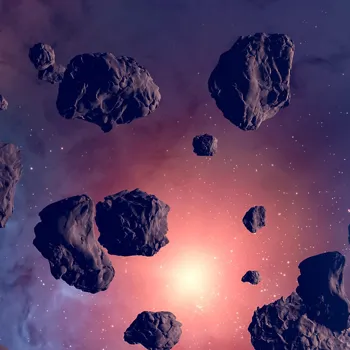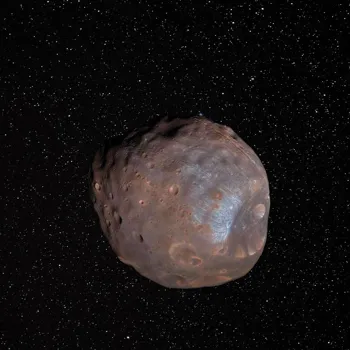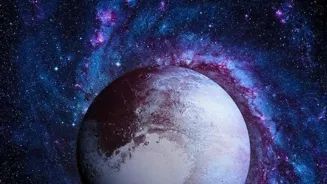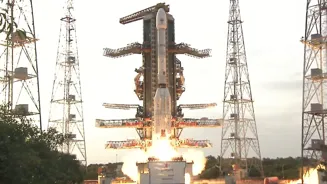Unveiling the Enigmatic Kuiper Belt: Beyond Neptune's Realm. Delve into the cosmic mysteries that shape our solar system!
For generations, school children have learned about our solar system, picturing
neatly arranged planets orbiting the sun. But beyond Neptune, the icy giant, lies a realm far more mysterious and complex than textbooks often reveal: the Kuiper Belt.

This vast, donut-shaped region is home to countless icy bodies, remnants from the solar system's formation, and it holds clues to understanding how our planetary neighbourhood came to be.
Scientists across the globe, including those at ISRO and other Indian research institutions, are increasingly turning their telescopes and computational power towards unraveling the secrets of this distant frontier .
What they are discovering is challenging existing theories and raising exciting new questions about the very nature of our cosmic origins.
The Kuiper Belt: A cosmic treasure trove revealing solar system's history and formation mysteries
The Kuiper Belt, often described as a "cosmic junkyard," is a treasure trove of information for astronomers. It's made up of icy leftovers from the solar system’s early days, material that never quite coalesced into planets.

These objects, ranging in size from small rocks to dwarf planets like Pluto, are essentially time capsules, preserving the conditions and ingredients that existed billions of years ago when the planets were forming.
Studying their composition and orbits allows scientists to piece together the puzzle of our solar system’s history, understand the processes that led to the formation of planets, and potentially even shed light on the origins of life itself. The sheer number of objects is staggering.
After all, if all these objects where put into a planey, it will be more massive than the Sun, and thus there are many speculations.
Unusual Kuiper Belt orbits linked to theoretical Planet Nine search
One of the most intriguing aspects of the Kuiper Belt is the unusual orbits of some of its objects. Instead of neatly circling the sun in a flat plane like the planets, some Kuiper Belt objects (KBOs) have highly tilted and elongated orbits.

Some scientists theorize that this could be due to the gravitational influence of a hypothetical "Planet Nine," a large, unseen planet lurking in the outer reaches of the solar system.
While Planet Nine remains purely theoretical, the search for it has spurred extensive observations and calculations, leading to a deeper understanding of the dynamics of the Kuiper Belt and the forces that shape the outer solar system.
This sort of speculation has allowed people to push forward with their mathematical models.
Scientists detect mysterious gravitational influence, challenging current solar system understanding
Scientists have been observing odd clustering within the data, which seems to indicate the objects are behaving as if there is something big influencing it's gravitational field.

If it is confirmed to be true, it means that our understanding of the solar system has been greatly limited compared to what is really out there.
What is even more important is that the effect that this new planet provides may not be able to be replicated without a planet being there, and that goes against our current beliefs of how planets interact with large amounts of objects in space.
Furthermore, we may have to change what we already know is true for the past thousands of years.
India's space program aids Kuiper Belt research using ground-based telescopes and international data
India's space program is also contributing to Kuiper Belt research. While ISRO doesn't currently have a dedicated mission to the Kuiper Belt, Indian astronomers are actively involved in analyzing data from international missions and conducting ground-based observations.
Indian telescopes, such as the Giant Metrewave Radio Telescope (GMRT) and the upcoming Thirty Meter Telescope (TMT), will play an important role in characterizing KBOs and searching for new objects in the outer solar system.
This dedication to research is being fostered by governmental grants that allow for space-faring missions to happen more frequently.
Telescopes worldwide collect comprehensive data, ISRO seeks researchers
These telescopes are able to cover a wide range of viewing angles that other observatories cannot.
For example, the northern region of the Earth can not see the Southern Cross constellation, and this is true vice versa, so having observatories around the world allows for the most comprehensive data to be collected.
Furthermore, the observatories are outfitted with different instruments that allow for a different reading of spectrum, allowing for more data gathering to happen. ISRO is also looking for new researchers in the fields to spearhead new data-gathering projects.
Kuiper Belt: Past and Future of Solar System
The Kuiper Belt is more than just a collection of icy rocks; it's a window into the past and a key to understanding the future of our solar system. As technology improves and our knowledge grows, we can expect even more surprising discoveries from this distant realm.

From the hunt for Planet Nine to the study of ancient building blocks of planets, the Kuiper Belt promises to keep astronomers busy for generations to come.












